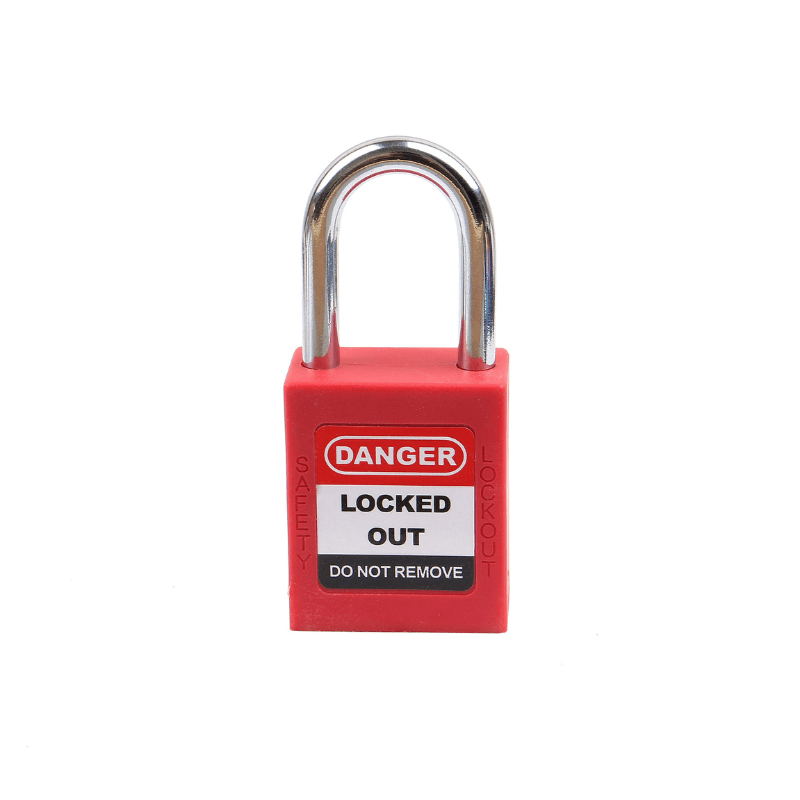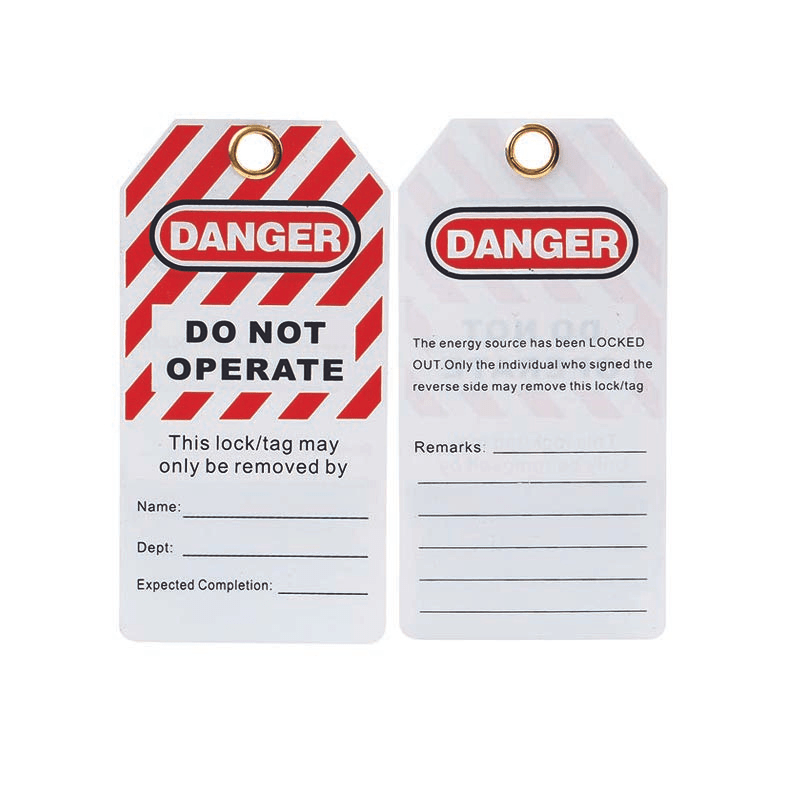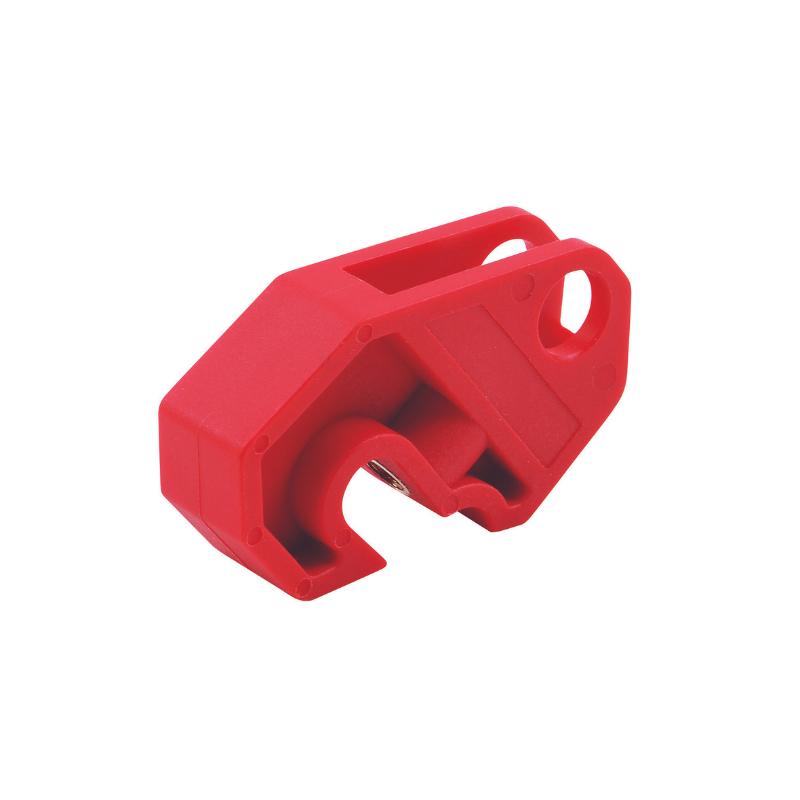In any effective Lockout Tagout (LOTO) program, the padlock plays an important role. It's the physical barrier preventing accidental energisation of machinery, safeguarding workers during maintenance and servicing. Selecting the appropriate LOTO padlock – or Cadenas de Consignation (French), Vorhängeschlösser (German) – is not merely a matter of compliance, but a fundamental step in ensuring workplace safety. This guide will help you understand the various types of safety padlocks and how to choose the best fit for your specific industrial needs.
Table of Contents
- Introduction: The Linchpin of LOTO Safety
- Why Padlock Selection Matters in LOTO
- Understanding Padlock Keying Systems
- Decoding Padlock Materials
- Shackle Variations and Their Importance
- Environmental Factors in Padlock Selection
- Specialised LOTO Padlocks for Specific Needs
- Making the Right Choice: A Practical Checklist
- The Lock Box: Your Partner in LOTO Padlock Solutions
- Conclusion: Securing Safety with the Correct Padlock
Introduction: The Linchpin of LOTO Safety
Lockout Tagout (LOTO) procedures are critical safety protocols designed to protect employees from unexpected startup or release of hazardous energy during service or maintenance activities. At the heart of these procedures is the LOTO padlock. Unlike standard padlocks, LOTO padlocks, often referred to as safety padlocks, are specifically designed for industrial environments and to meet stringent safety regulations. Their primary function is to ensure that an energy isolation device remains in the safe (off) position, providing a clear visual warning and a robust physical impediment to unauthorized operation.
The choice of padlock directly impacts the effectiveness of your LOTO program. A LOTO system is only as strong as its weakest link, and often, that can be an improperly selected or maintained padlock. This makes understanding the nuances of different industrial padlocks essential for safety managers, maintenance personnel, and anyone involved in implementing or adhering to LOTO protocols.
Why Padlock Selection Matters in LOTO
Selecting the right padlock for your Lockout Tagout system is not a trivial decision. Several factors underscore its importance:
- Worker Safety: The foremost reason is the protection of personnel. The correct padlock ensures that machinery cannot be inadvertently started while an employee is performing maintenance. A failure in the locking mechanism can have catastrophic consequences.
- Compliance: Regulatory bodies across Europe and globally (e.g., OSHA in the USA) mandate specific characteristics for LOTO devices. Using compliant padlocks, such as those specifically designed as LOTO padlocks, is crucial for legal adherence and avoiding penalties. These padlocks are typically standardized, singular in purpose (not used for other security), and identifiable.
- Durability and Reliability: Industrial environments can be harsh. Padlocks may be exposed to chemicals, extreme temperatures, moisture, and physical impact. A padlock unsuitable for its environment can fail prematurely, compromising safety.
- System Integrity: The keying system of padlocks (discussed below) is vital for managing access and ensuring that only authorized personnel can remove their locks. A well-planned keying strategy enhances the security and efficiency of the LOTO program.
- Clear Identification: LOTO padlocks often come in various colors and can be labeled, allowing for easy identification of the worker or department responsible for the lockout. This visual cue is critical in complex lockout scenarios involving multiple energy sources or many workers.

Figure 1: Worker applying a LOTO padlock to an energy isolation device
Understanding Padlock Keying Systems
The keying mechanism is a core feature distinguishing different types of LOTO padlocks. The choice of keying system depends on the operational needs and safety policies of your facility.
Keyed Different (KD) Padlocks
Keyed Different (KD) padlocks mean that each padlock has its own unique key. No other key within that set (or often, within the entire facility's LOTO padlock supply) will open it.
- Application: This is the most common system for personal LOTO locks. Each authorized employee is issued one or more padlocks that only their key can open. This ensures individual accountability – the equipment cannot be re-energized until that specific worker removes their lock.
- Benefits: Highest level of individual security and responsibility. Prevents accidental removal of another worker's lock.
- Considerations: Managing a large number of unique keys can be administratively challenging for very large teams. If a key is lost, the lock may need to be destructively removed under strict supervision.
Keyed Alike (KA) Padlocks
Keyed Alike (KA) padlocks are a set of locks that can all be opened by the same key.
- Application: Useful when a single employee needs to lock out multiple energy isolation points (e.g., several circuit breakers on one machine). Instead of carrying multiple different keys, the worker uses one key for all their assigned KA padlocks. Also used for department-specific locks where multiple team members might need access to the same set of locked-out equipment (though this requires careful procedural control).
- Benefits: Convenience for individuals managing multiple lockout points. Simplifies key management for specific tasks.
- Considerations: If one key is compromised or lost, all padlocks in that KA set are vulnerable. Strict control over key distribution is essential. These are often referred to as keyed alike padlocks for specific LOTO kits.
Master Keyed (MK) Padlocks
In a Master Keyed (MK) system, each padlock has its own unique key (like KD), but there is also a master key that can open all padlocks within that specific system or group.
- Application: Primarily used for supervisory access in emergencies or for planned removal by authorized personnel according to strict, documented procedures. For instance, if a worker has left the facility without removing their personal lock, a supervisor might use the master key after verifying the worker's safety and completing necessary protocols.
- Benefits: Allows for controlled, authorized override capability without needing to destroy the lock.
- Considerations: The master key must be kept under extremely secure control to prevent misuse. Its use should be rare and meticulously documented. The existence of a master key slightly reduces the absolute security of individual locks compared to a pure KD system.
Grand Master Keyed (GMK) Padlocks
A Grand Master Keyed (GMK) system is a more complex hierarchical system. Multiple Master Keyed groups exist, each with its own master key. A Grand Master Key can open all locks in all Master Keyed groups under its purview.
- Application: Suitable for very large facilities with multiple departments or extensive LOTO requirements. Allows for tiered supervisory access.
- Benefits: Provides a structured approach to managing access in large, complex organizations.
- Considerations: Highest level of key control complexity and security risk if the GMK is compromised. Its use is generally restricted to very high-level authorized personnel and under very specific circumstances.
Decoding Padlock Materials
The material of the padlock body and shackle is crucial for its durability, resistance to environmental factors, and suitability for specific hazard types. Common materials for LOTO padlocks include nylon, steel, and aluminium.

Example: Nylon Safety LOTO Padlock
Nylon Body Padlocks: For Electrical Safety and More
Nylon body padlocks are a popular choice for many LOTO applications, particularly where electrical hazards are present.
- Features: Lightweight, non-conductive (dielectric) plastic body. Often available in multiple colours for easy identification and zoning. Resistant to many chemicals.
- Applications: Ideal for locking out electrical circuit breakers, switches, and plugs. Their non-conductive properties make them essential non-conductive padlocks for electricians and maintenance staff working near live electrical components. Also suitable for general LOTO in moderately corrosive environments.
- Benefits: Enhanced electrical safety (prevents current transfer). Good chemical resistance. Lightweight reduces strain on equipment and personnel carrying multiple locks. Colour-coding options facilitate organized LOTO programs.
- Considerations: May not offer the same level of brute force resistance as steel padlocks. UV stability can vary, so for long-term outdoor use, ensure the nylon is UV-stabilized.
Steel Body Padlocks: Strength and Durability
Steel body padlocks are chosen for their robustness and resistance to physical attack.
- Features: Heavy-duty construction, often with hardened steel or laminated steel bodies. High tensile and shear strength.
- Applications: Suitable for high-security LOTO applications where physical tampering or harsh physical conditions are a concern. Common in heavy industries, manufacturing, and outdoor environments requiring robust industrial padlocks.
- Benefits: Excellent resistance to cutting, sawing, and impact. Provides a strong physical deterrent.
- Considerations: Conductive, so not suitable for most electrical lockout applications unless paired with non-conductive accessories or used on de-energized and verified systems far from any potential electrical exposure. Can be heavier than nylon or aluminium. May corrode in certain environments unless specifically treated or made from stainless steel.
Aluminium Body Padlocks: Lightweight and Corrosion-Resistant
Aluminium padlocks offer a balance of light weight and good corrosion resistance.
- Features: Lighter than steel but stronger than nylon. Good resistance to corrosion, especially in marine or chemical environments. Often available in anodized colours.
- Applications: General LOTO in various industries, including food processing, pharmaceuticals, and outdoor settings where moisture or corrosive substances are present. Can be used in some electrical applications if the shackle is also non-conductive or properly isolated.
- Benefits: Good strength-to-weight ratio. Excellent corrosion resistance. Colour options aid in systemisation. Spark-resistant options are available.
- Considerations: Conductive material, so care must be taken in electrical environments. May not be as resistant to brute force as steel padlocks.
Shackle Variations and Their Importance
The shackle is the U-shaped part of the padlock that passes through the lockout point. Shackle material, diameter, and length are critical considerations.
Hardened Steel Shackles
Most common for security, hardened steel shackles offer superior resistance to cutting, sawing, and prying. They are often found on steel and some heavy-duty aluminium padlocks. Ideal for applications where physical security is paramount.
Stainless Steel Shackles
Provide excellent corrosion resistance, making them suitable for wet, humid, or chemical-laden environments. Often paired with aluminium or nylon bodies for enhanced durability in harsh conditions.
Nylon Shackles: Non-Conductive and Non-Sparking
Essential for electrical lockout applications to prevent the transfer of electrical current. Nylon shackles are dielectric and can also be non-sparking, which is crucial in potentially explosive atmospheres. These are key features of non-conductive padlocks.
Steel Wire/Cable Shackles: Flexibility for Unique Lockout Points
Some LOTO padlocks feature flexible steel wire or cable shackles instead of rigid ones. These are useful for locking out devices with awkward or closely spaced lockout points where a standard shackle won't fit, such as certain types of valves or electrical panels.
Shackle diameter and clearance (length) also matter. The shackle must be thick enough to provide adequate security and thin enough to fit through the lockout point. Longer shackles may be needed for larger devices or when multiple items are secured with one lock via a hasp.

Example: LOTO Padlock with Steel Wire Shackle
Environmental Factors in Padlock Selection
The environment where the LOTO padlock will be used significantly influences the best choice of material and design.
Corrosive Atmospheres
In chemical plants, offshore platforms, wastewater treatment facilities, or areas with high salt content in the air, corrosion is a major concern. Padlocks made from or coated with corrosion-resistant materials like stainless steel (for shackles and internal components), aluminium (bodies), or specialized plastics (nylon bodies) are essential. Look for padlocks with protected keyways to prevent ingress of corrosive agents.
Electrical Hazards
As previously emphasized, for any lockout on or near electrical equipment, non-conductive padlocks are paramount. This typically means nylon body padlocks with nylon or non-conductive coated steel shackles. Ensure the entire padlock assembly (body, shackle, and internal components where feasible) prevents electrical conductivity to protect workers from arc flash and electric shock. These are vital safety padlocks in such settings.
Outdoor and Extreme Weather Conditions
Padlocks used outdoors are exposed to rain, snow, UV radiation, and fluctuating temperatures. This demands weatherproof features such as:
- Sealed shackle openings and keyways to prevent water and dust ingress.
- UV-stabilized materials (especially for plastic bodies) to prevent degradation from sunlight.
- Materials that perform well in both high and low temperatures without becoming brittle or seizing. Stainless steel components are beneficial here.
The Lock Box offers options like the "LOTO Dustproof Padlock - Nylon" or "Waterproof Padlock - Steel" which are designed for such conditions.
Cleanroom and Food Processing Environments
In industries like pharmaceuticals and food processing, hygiene is critical. Padlocks should be easy to clean and made from non-shedding, non-toxic materials. Stainless steel or smooth nylon padlocks are often preferred. They should not have crevices where contaminants can accumulate. Some padlocks are specifically designed for washdown procedures.
Specialised LOTO Padlocks for Specific Needs
Beyond standard designs, some LOTO padlocks cater to very specific requirements:
Compact Padlocks
Smaller and lighter, compact LOTO padlocks are designed for use in tight spaces, such as within complex machinery panels or on small circuit breakers where a standard-sized padlock might not fit or could obstruct other components.
Long Shackle Padlocks
These padlocks feature an extended shackle length (e.g., 76mm shackles as offered by The Lock Box). They are useful for securing lockout points that are recessed, unusually large, or when locking out multiple items through a hasp where a standard shackle length is insufficient.
Dustproof and Weatherproof Padlocks
As mentioned, these padlocks incorporate features like keyway covers and sealed bodies to protect internal mechanisms from fine dust particles, dirt, and moisture. This enhances reliability and longevity in harsh industrial or outdoor settings.
Making the Right Choice: A Practical Checklist
When selecting LOTO padlocks for your facility, consider the following checklist:
| Consideration | Questions to Ask | Common Solutions |
|---|---|---|
| Environment | Will the padlock be used indoors/outdoors? Exposed to chemicals, moisture, dust, extreme temperatures? Near electrical hazards? | Nylon for electrical/chemical; Steel for durability; Aluminium for corrosion/lightweight; Stainless steel components for harsh conditions. Weatherproof/dustproof covers. |
| Application | What type of equipment is being locked out (electrical, mechanical, valves)? Are there space constraints? | Non-conductive for electrical; Steel for robust mechanical; Cable/wire shackles for valves/awkward points; Compact for tight spaces. |
| Keying System | How many employees need locks? Is supervisory access required? Do individuals need to lock multiple points? | KD for personal locks; KA for individual convenience on multiple points; MK/GMK for controlled supervisory access. |
| Durability | Is there a risk of physical damage or tampering? | Steel body, hardened steel shackle for high security. |
| Identification | Is colour-coding or labeling required for departments or individuals? | Coloured nylon or aluminium padlocks; Engraving options. |
| Compliance | Does the padlock meet relevant safety standards (e.g., OSHA 1910.147 "one person, one lock, one key" principle)? Is it specifically designed for LOTO? | Ensure padlocks are sold as LOTO/safety padlocks and meet requirements for standardization, identification, and durability. |
| Shackle Requirements | What shackle diameter and length are needed? What material is appropriate (steel, stainless, nylon, cable)? | Measure lockout points. Choose non-conductive nylon shackles for electrical. Stainless steel for corrosion. Long shackles for reach. |
The Lock Box: Your Partner in LOTO Padlock Solutions
At The Lock Box, we understand the critical importance of reliable and appropriate LOTO solutions. We offer a comprehensive range of LOTO Padlocks (Cadenas de Consignation / Vorhängeschlösser) designed to meet the diverse needs of European industries. Our selection includes:
- Nylon Body Padlocks: Including dustproof options, perfect for electrical safety and general LOTO. Available in various colours and shackle lengths (e.g., 38mm, 76mm).
- Steel Body Padlocks: Heavy-duty and slim steel designs for enhanced security and durability.
- Aluminium Body Padlocks: Lightweight and corrosion-resistant choices.
- Steel Wire Padlocks: For flexible lockout applications.
- Keying Options: Many of our padlocks are available in Keyed Alike (KA) and Keyed Different (KD) configurations to suit your specific program requirements.
- Customisation: We can assist with customisation needs, such as engraving for identification.
Our safety padlocks are built to withstand demanding industrial environments and help you maintain a compliant and effective Lockout Tagout program. Explore our Padlocks collection page to find the right solution for your facility.
Conclusion: Securing Safety with the Correct Padlock
Choosing the right LOTO padlock is a foundational element of workplace safety. By carefully considering the keying system, materials, shackle type, and the specific environmental and application challenges, you can significantly enhance the effectiveness of your Lockout Tagout procedures. The appropriate industrial padlocks not only ensure compliance but, more importantly, protect your workforce from hazardous energy release. Prioritize quality, suitability, and proper training to make your LOTO program robust and reliable.
For expert advice and a wide selection of high-quality LOTO padlocks, including keyed alike padlocks and non-conductive padlocks, The Lock Box is your trusted partner in safety.



